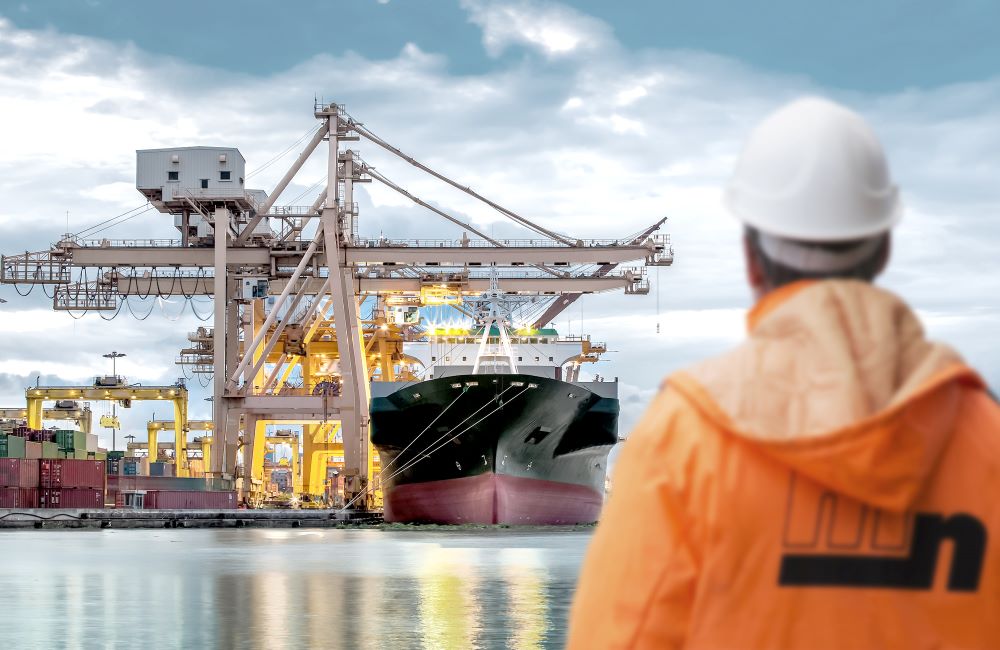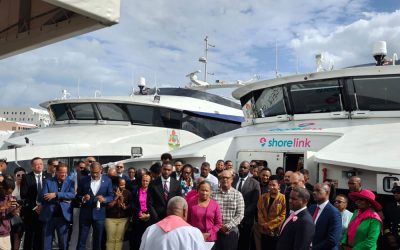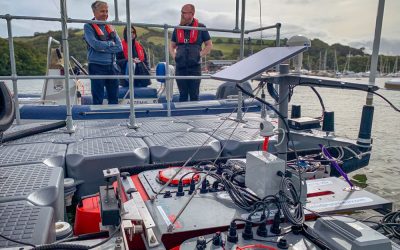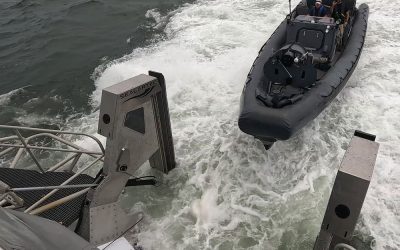In the Michael Palin documentary ‘Around the World in 80 Days’, which premiered in 1989, a central mode of transport was the cargo vessel, on which the presenter travelled at many points in his adventure. During one leg of his trip the captain of the Neptune Diamond sailing from Singapore remarks, “In a few years a trained monkey could do this job… We are here to make money. That is all a ship is built for, to make cash.” This sentiment feels increasingly prescient in a world where efficiency is top priority, and the needs of the crew are placed second.
In the maritime industry, the design of accommodation for seafarers is a topic that has garnered increasing attention in recent years. As the Seafarers Happiness Index (SHI) reveals, the quality of living spaces aboard ships significantly affects the well-being and job satisfaction of the crew. Steve Jones, a representative from SHI, argues that while the design of crew accommodation has evolved seafarers still face ongoing challenges.
Jones emphasises that modern ship accommodations have become more sterile and functional, often prioritising compliance with regulatory requirements over comfort and aesthetic appeal. “It’s just a part of the machine that people happen to live in,” he notes, lamenting the lack of investment in making these spaces more welcoming and enjoyable for the crew. A further shift towards utilitarian design reflects a broader industry trend where technical aspects and cost-saving measures overshadow considerations for crew well-being.
The evolution of ship accommodation design has led to a noticeable decline in the quality of social and recreational spaces on board. According to Jones, ships today are equipped with minimal and often inadequate amenities. “That certainly comes across now in the SHI where people say there’s just nowhere to really go when they’ve finished their shift,” he explains.
“We’ve got gyms that are tiny and rubbish, there’s a saloon, but that is usually only dining chairs, which are okay for 20 minutes while you’re scoffing your food, but you wouldn’t want to sit in to relax for a long time,” he adds, highlighting the lack of comfortable and inviting areas for relaxation and social interaction. The absence of such spaces can detrimentally affect the mental health and overall morale of the crew, making their time at sea feel more like an ordeal than a fulfilling experience.
A lack of discourse
Furthermore, Jones points out the disconnect between the emphasis on the technical elements of shipbuilding and the neglect of accommodation quality. He argues that this imbalance results in a diminished seafaring experience, contributing to dissatisfaction and potentially deterring future generations from pursuing careers at sea. “There’s so much talk about propulsion and technical details, but you very rarely, if ever, hear a discussion about accommodation and how we can maximise the experience for seafarers,” Jones observes.
This lack of discourse about the human side of ship design underscores the need for a change in thinking in the industry. “Unfortunately, it’s also manifest because increasingly there are fewer people in shipping companies that have actually been to sea,” Jones adds.
Captain James Foong, a seasoned mariner, echoes these sentiments and offers practical insights into the specific challenges faced by seafarers about their accommodation. He underscores the importance of soundproofing, noting that poor sound insulation can severely disrupt rest hours.
“The sound penetration between cabins is a problem. The ringing of a telephone in one cabin can disturb someone sleeping in the next cabin,” Foong explains. This issue is compounded by the placement of cabins near noisy areas such as the engine room or laundry facilities, which can further worsen sleep disturbances and reduce the quality of rest for the crew.
Foong also highlights the impact of modern conveniences, such as Wi-Fi, on the usage of recreational spaces. He notes that the need for communal recreation rooms has decreased as crew members increasingly prefer to stay in their cabins and use their personal devices. This shift presents an added challenge for designers who must now consider how to create private yet comfortable living quarters that cater to the crew’s evolving needs.
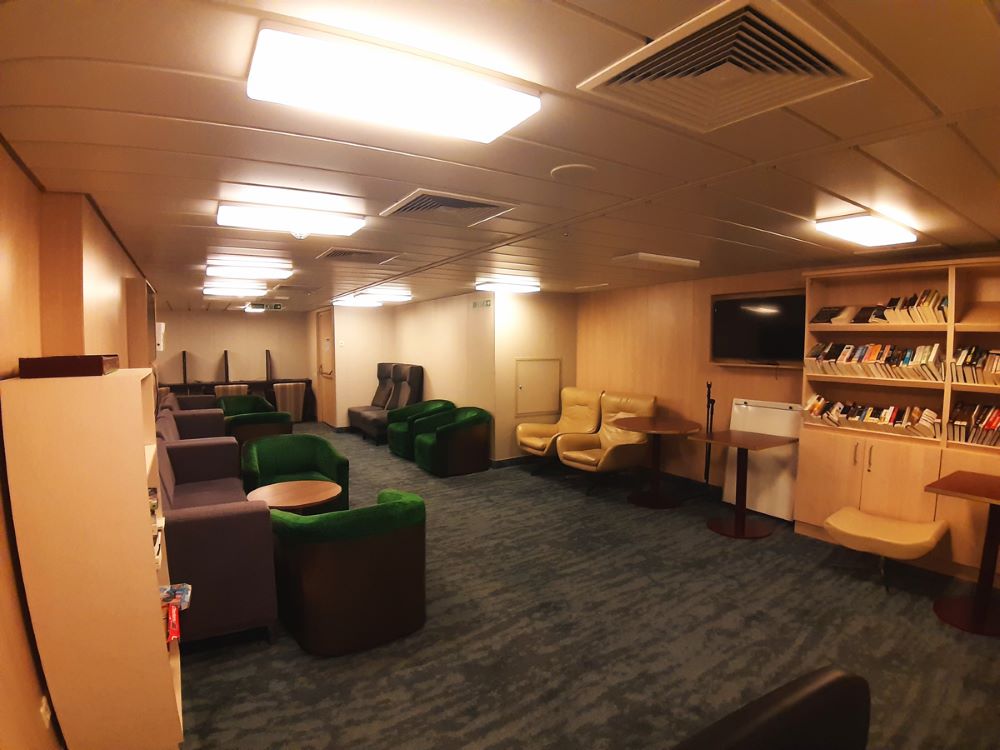
The lack of comfortable and inviting areas for relaxation and social interaction can detrimentally affect the mental health and overall morale of the crew
Some progress and ongoing challenges
Adding to this discussion, a study conducted by the Seafarers International Research Centre (SIRC) at Cardiff University in 2019 offers detailed insights into the mental health and well-being of seafarers. Directed by Professor Helen Sampson and researcher Neil Ellis, the study gathered feedback from over 1,500 seafarers, more than 40 shipping company HR managers, and representatives from employers, maritime charities, and P&I clubs. The research revealed a mixed picture of progress and ongoing challenges.
One positive finding was the increase in the number of seafarers satisfied with their cabins, with those rating their shipboard accommodation as good or very good rising from 51% to 74% over five years. Nevertheless, the proportion of seafarers on tours longer than six months decreased from 55% to 34%, and satisfaction with the quality of food onboard improved, though around one-third still described the food as unhealthy.
However, the study also highlighted significant issues: while onboard internet access had improved, many seafarers complained about time limitations or having to pay for access. The proportion of seafarers unable to get adequate rest all the time rose from 35% to 53%, and 60% reported being disturbed by noise, with 59% affected by vibrations in their cabins. Furthermore, reductions in recreational facilities and an increase in the number of seafarers never able to take shore leave from 7% to 11% were reported, illustrating the ongoing challenges in improving seafarer welfare.

Thom Herbert, Idwal crew wellbeing advocate. Source: Idwal
Idwal, a company that provides owners and operators with a tool for assessing many aspects of vessel performance, also assesses aspects such as crew welfare.
Thom Herbert, senior marine surveyor Asia and Idwal crew wellbeing advocate, elaborated on the firm’s comprehensive efforts in assessing both the technical condition of vessels and the welfare of their crews. “If you’re taking that risk and spending significant time away from your family and your loved ones for a job, the bare minimum you would expect is a nice living condition. Unfortunately, we just don’t see that enough throughout the industry,” Herbert explains.
The company has been inspecting vessels for nearly a decade but have only recently started to incorporate welfare data into its assessments. This innovative approach includes a Social Impact Score (SIS) derived from 50 distinct criteria seen during inspections, allowing for a nuanced evaluation of onboard living conditions. A significant concern highlighted is again connectivity, specifically the availability and cost of Wi-Fi. “Connectivity is the one that absolutely we see that can and should improve massively,” says Herbert. Although a sizeable percentage of vessels are equipped with Wi-Fi, many crew members either must pay for it or face data limits, which significantly affects their quality of life.
The most recent quarterly survey by the SHI further underscores the difficulties faced by seafarers. Many noted that the profession could be incredibly lonely due to the absence of a strong social support system and limited interactions with others. Concerns were raised about the lack of investment by companies in onboard recreation facilities, which are seen as vital in alleviating daily stresses. Additionally, there was criticism about excessive and unnecessary paperwork, highlighting a perceived gap between the human approach outlined in company policies and the actual practice on board. Frustrations over cramped accommodation areas and limited access to the internet, due to data limits or added fees, were also common. The shortage of rooms on board worsens these issues, making life at sea even more challenging for the crew.
Practical design improvements can make a big difference
The design and placement of essential facilities like elevators also play a crucial role in ensuring the crew’s comfort and convenience. Foong suggests that older, poorly designed elevators with heavy access doors can create unnecessary noise and inconvenience, further disrupting the crew’s daily life. “If we can install modern elevators on vessels similar to the ones in shopping malls, or offices it would reduce sound disturbance because some people slam the door of the elevator, disturbing those sleeping nearby,” he proposes. Such practical design improvements can significantly enhance the overall living experience for seafarers.
Both Jones and Foong advocate for a more thoughtful and human-centric approach to ship accommodation design. They stress the importance of involving naval architects who prioritise crew welfare and are willing to invest in quality materials and innovative designs. Jones recommends engaging in conversations about the quality of materials and the overall design philosophy to foster a greater emphasis on comfort and liveability. He also suggests collaborating with experts like the team at Idwal, who have conducted research on the social impact of accommodation in the maritime industry.
Thom Herbert can draw from his own firsthand experiences as a seafarer in industry when looking at what improvements to make. During his own time spent at sea he also had to deal with inadequate connectivity, poor water quality, and subpar food on vessels. “Unfortunately, vessels have had issues with the fresh water supply, and this has led to crew members becoming sick. This not only has a physical, but also a mental impact about trusting the water supply,” he says. While there has been a growing interest in crew welfare, particularly post-Covid, more effort is needed to prioritise and enhance these conditions.
Continuous improvement is essential
Idwal’s collected data is used to provide recommendations to shipowners and operators, though they lack the authority to enforce changes. Some issues, like noise on board a vessel, that may affect seafarer’s sleep are also unfortunately difficult to assess. “It’s often very difficult to fully assess noise whenever a vessel’s alongside or when it’s at anchor, it’s not till you’re out at sea, full steam ahead going that the rattles start coming from the roof or the door and, but this stops when the vessel isn’t moving,” Herbert says.
However, he stresses the importance of Idwal’s SIS in highlighting issues and pushing for industry standards to be raised. He believes that although there are existing measures in place, continuous improvement is essential for achieving best living conditions for seafarers.
The current state of seafarer accommodation design reflects a broader industry trend towards functionality and cost-efficiency at the expense of crew well-being. Both Steve Jones and Captain James Foong underscore the need for a cultural shift within the maritime sector to prioritise the comfort and mental health of seafarers. By addressing the myriad of issues such as soundproofing, the quality of recreational spaces, connectivity, and overall sanitation the industry can enhance the living conditions on board ships, ultimately leading to greater job satisfaction and retention among seafarers.
As Jones aptly puts it: “No one wants to spend more money, but seafarers out there deserve better.” This recognition is the first step towards creating a more humane and fairer world for seafarers.
